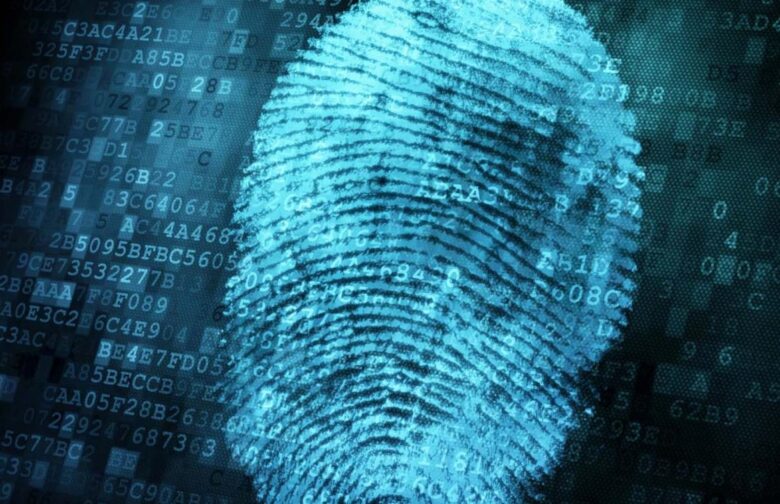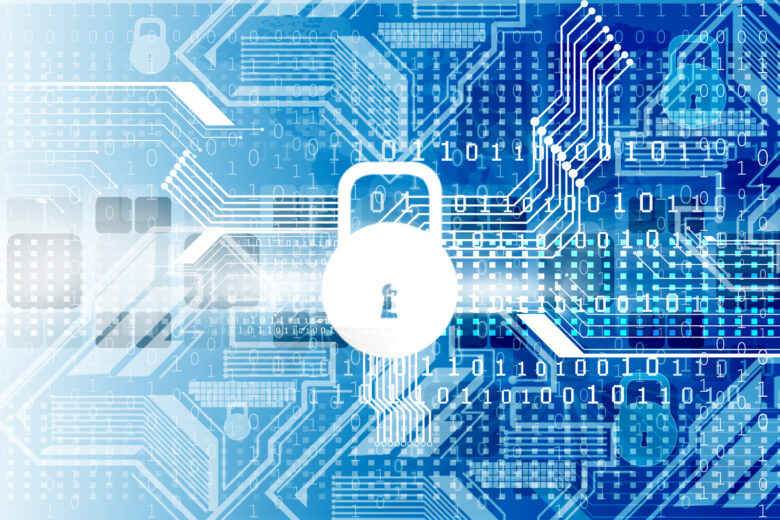In the digital age, computer forensics has become the backbone of cybercrime investigation. It’s a field where experts meticulously uncover and analyze electronic data, often leading to critical breakthroughs in legal cases. As technology evolves, so do the methods criminals use to hide their tracks, making computer forensics an ever-changing battleground.
Professionals in this niche are digital detectives, armed with a blend of tech-savvy skills and analytical prowess. They dive deep into the bits and bytes, retrieving information that’s not just deleted but carefully concealed.
Their work supports the pursuit of justice, making it an indispensable part of modern law enforcement.
Understanding computer forensics is crucial for anyone in the loop of cybersecurity, legal battles, or those simply fascinated by the intersection of technology and law.
It’s a world where every keystroke can tell a story, and forensic experts are the storytellers.
History of Computer Forensics

The field of computer forensics has its roots planted firmly in the early days of computing. Agents of change, these early forensics practitioners bridged the gap between technology and law. Initially, the discipline dealt primarily with data recovery, to retrieve information from computer systems that was not readily accessible.
As the 1970s and 80s unfolded, governments and law enforcement agencies began formalizing techniques to systematically analyze computer systems for evidence.
During the 1990s, the internet’s burgeoning growth spawned new channels for criminal activity. This period marked a significant shift in the complexity and breadth of crimes involving digital devices.
Law enforcement needed tools capable of sifting through the rapidly increasing volume of digital data. It was then that software companies stepped in, creating specialized tools designed for digital investigations.
These tools became the precursors to modern forensics software, shaping the future of the field.
As more devices became interconnected, the role and capabilities of computer forensics services expanded. Law enforcement agencies worldwide established dedicated cybercrime units, focusing solely on crimes involving digital evidence.
Professionals in the field were no longer just recovering deleted files – they were identifying intricate patterns and behaviors across vast digital landscapes.
Guidelines and procedures for computer forensics began to develop, as organizations like the Scientific Working Group on Digital Evidence (SWGDE) and the International Organization on Computer Evidence (IOCE) emerged.
They played crucial roles in establishing standards that could be universally applied in digital forensics.
Throughout its history, computer forensics has constantly adapted to the evolving digital environment. It reflects a dynamic narrative of innovation, guiding investigators through the intricate webs woven by technology’s relentless advancement.
Tools and Techniques Used in Computer Forensics

When tackling the broad spectrum of challenges that fall under the computer forensics umbrella, professionals employ a variety of specialized tools and techniques designed to extract, analyze, and preserve digital evidence effectively.
Forensic software is paramount in this field, with leading solutions like EnCase, FTK, and Cellebrite offering comprehensive capabilities for data retrieval from various devices including computers, smartphones, and tablets.
Beyond software, forensic experts also rely on hardware tools that allow them to clone hard drives without the risk of data corruption or alteration.
Write blockers, for instance, are essential for ensuring that the data on an original drive isn’t modified while investigators create a bit-for-bit copy for analysis.
They utilize a combination of static and dynamic analysis techniques to scrutinize system files and memory. Static analysis involves examining system data at rest without executing code or applications, thereby reducing the risk of data alteration.
Dynamic analysis, on the other hand, monitors system behavior in real-time, which helps in understanding complex interactions within the system as they occur.
The sophistication of computer forensics tools reflects the necessity for thorough investigation methods, which include:
- Live data forensics, allowing the capture of system information that would not be available in a switched-off state.
- Network forensics, which is essential for investigating cybercrimes involving intrusions and unauthorized network access.
- Cryptanalysis, used to decipher encrypted data and gain access to protected information.
- File carving, to reconstruct fragmented or damaged file systems.
| Type | Example Tools |
|---|---|
| Forensic Software | EnCase, FTK |
| Hardware Cloning Tools | Write Blockers |
| Network Forensics | Wireshark |
| Cryptanalysis | ElcomSoft |
| File Recovery | PhotoRec, TestDisk |
These tools are wielded within a stringent framework of procedures that ensure the integrity and admissibility of evidence.
They’re continually refined to keep pace with the evolving landscape of digital technology, ensuring that computer forensics remains a step ahead of potential digital malfeasance.
Role of Computer Forensics in Cybercrime Investigations

Computer forensics services play a crucial role in the investigation of cybercrimes. With the digital world becoming an integral part of daily life, the ability to uncover and interpret electronic data is essential.
Forensic experts analyze this data to establish a chain of evidence that can be critical in prosecuting cases involving digital crimes.
Identifying the source of a cybercrime is one of the primary tasks of a computer forensic expert. Through the meticulous examination of system logs, IP addresses, and other relevant data, these professionals can trace the origins of malicious activity.
They not only identify the perpetrators but also provide insights into the methods and strategies used to commit the crime.
During cybercrime investigations, the findings of computer forensics experts often reveal:
- Patterns of illegal activity
- Identity of the individuals involved
- Methods of data breach or intrusion
- Impact and scope of the damage inflicted
Moreover, computer forensics teams work closely with law enforcement agencies to ensure that the evidence is both legally obtained and technically sound.
The tools mentioned earlier, such as EnCase and FTK, play a significant role in this process. Analysis through these tools is performed in a way that avoids data tampering or corruption, which could potentially compromise the evidence.
Educating the judiciary about digital evidence is another aspect where computer forensics proves invaluable. Forensics experts often serve as expert witnesses, explaining complex technical details in a manner that’s understandable to non-technical stakeholders, such as judges and jury members.
With the incidence of cybercrime on the rise, the demand for digital forensics expertise is also increasing. Cybercriminals continue to evolve their tactics, making it imperative for computer forensics professionals to always stay a step ahead with cutting-edge tools and up-to-date knowledge.
Through ongoing training and a commitment to technological innovation, these experts are an indispensable asset in the fight against cybercrime.
Challenges Faced by Computer Forensics Professionals

Computer forensics professionals navigate a complex landscape marked by a variety of challenges that can make their work both tricky and intense. Rapid technological advancements are a double-edged sword in the realm of digital crime.
While they bring about new tools for forensic experts, they also allow criminals to exploit newer, more sophisticated techniques.
Consequently, forensic teams must constantly update their skill sets and tools to keep pace with the ever-evolving digital environment.
Another significant hurdle is the volume of data that needs to be analyzed. With terabytes of information often stored across various devices and platforms, the process of sifting through and securing relevant evidence is both time-intensive and meticulous.
Data collection and preservation must follow strict legal protocols to maintain the integrity of the evidence, adding another layer of complexity to the procedure.
Legal and Ethical Considerations
Adhering to legal and ethical standards is paramount in computer forensics. Forensic experts must ensure that their methods comply with laws related to privacy and data protection.
Violations can compromise cases and result in evidence being deemed inadmissible in court.
Additionally, there’s the challenge of maintaining a chain of custody for digital evidence, documenting every step of the process to uphold the evidence’s credibility in the judicial system.
Encryption and Anonymity
Criminals often use encryption and anonymity tools to cover their tracks, making the forensics process even more daunting. Encryption technology, meant to secure data from unauthorized access, can pose significant barriers for forensic teams aiming to extract data for analysis.
Similarly, anonymity services, like the Tor network, make it challenging to pinpoint the origins of cybercrime, further complicating investigations.
As digital environments become more cloud-centric, computer forensics experts also face the intricacies of retrieving data from servers often located in different jurisdictions.
This cross-border aspect may introduce legal ambiguities and require collaboration with international law enforcement agencies, highlighting the necessity for a global perspective in digital forensics.
With the stakes in cybercrime investigations being incredibly high, the challenges facing computer forensics professionals underscore the importance of their role in modern law enforcement.
As these experts work to navigate through these obstacles, they don’t just solve crimes; they also shape the future of digital security and jurisprudence.
The Impact of Technology on Computer Forensics

The role of technology in computer forensics is a double-edged sword. Forensic specialists often leverage cutting-edge software and hardware to extract and analyze data.
However, criminals also use advanced technologies to obscure their digital tracks. This tech race means that forensic tools must evolve rapidly to keep pace with the new methods employed by cybercriminals.
Forensic professionals benefit from technology through automated processes that can sift through vast amounts of data quickly.
These tools are invaluable for identifying patterns, decoding complex structures, and recovering hidden or deleted information. In particular, machine learning and artificial intelligence have become significant assets, capable of recognizing anomalous activities that might indicate malicious actions.
On the flip side, technology presents new challenges. The very sophistication of digital devices now offers multiple ways for offenders to disguise their activities.
Encryption has become more robust, making it harder for forensic experts to decrypt information without the necessary keys. Anti-forensics tactics, like data obfuscation and steganography, are frequently used to avoid detection while maintaining communication with accomplices.
Moreover, the constantly expanding realm of IoT devices adds a layer to forensic investigations. Now, forensic experts must consider smart home devices, wearables, and other connected gadgets that could hold evidence relevant to a case.
The data captured by these devices, such as timestamps, activity logs, and geolocation information, provides a more detailed picture of events, yet also increases the complexity and scope of investigations.
Interconnected networks and cloud services have given rise to data storage and retrieval across multiple jurisdictions. With data possibly housed in servers across several countries, legal barriers can slow down or even halt the acquisition of critical evidence. Experts must navigate an intricate web of international laws and regulations, often requiring cooperative measures that can be time-consuming and politically sensitive.
Advances in technology have surely propelled computer forensics forward, equipping experts with more tools than ever before. However, these advancements demand that professionals continue to adapt and develop skills to utilize these tools effectively within the dynamic digital landscape.
Conclusion

The dynamic interplay between technological advancement and computer forensics shapes the future of cyber investigations.
As forensic experts harness sophisticated tools to uncover digital evidence, they also face the relentless evolution of cybercrime techniques.
The field’s complexity is heightened by the surge in IoT devices and the necessity for global collaboration to navigate legal intricacies.
To maintain the upper hand, professionals in computer forensics must remain agile, continuously updating their arsenal of skills and methods.
Their ability to adapt will not only define their success but also ensure the ongoing protection of digital integrity in an increasingly connected world.


